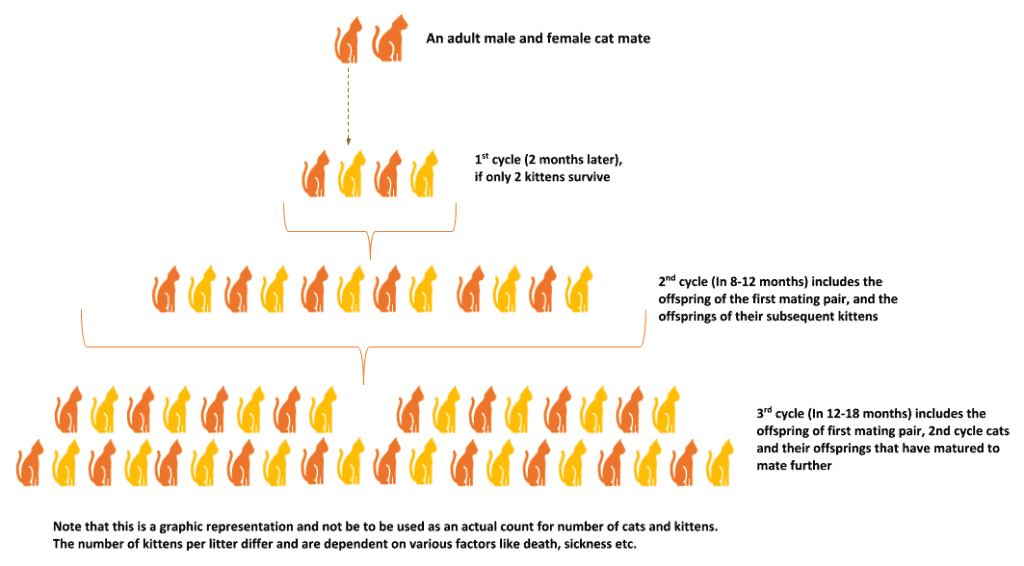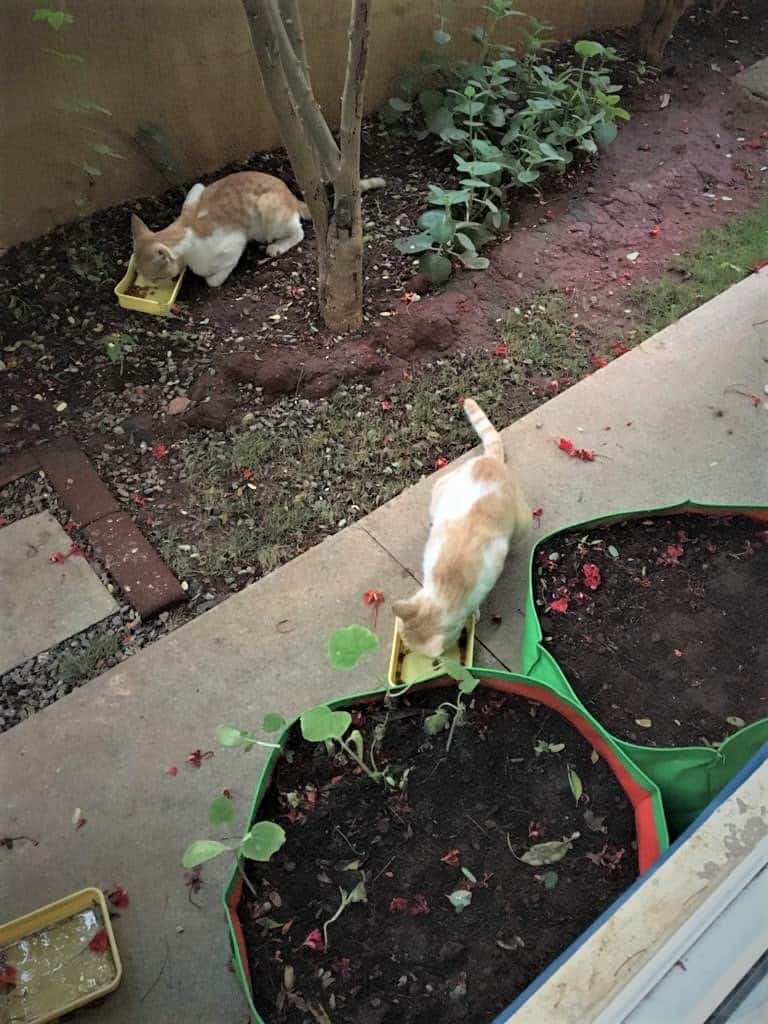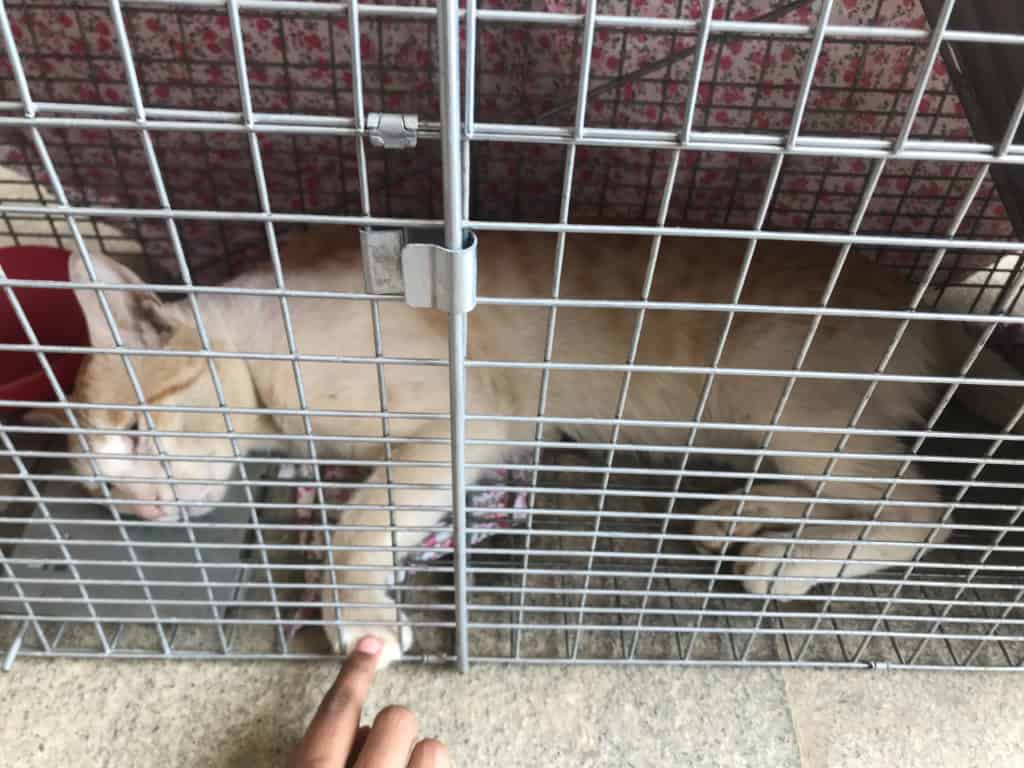In early 2019, news about Raj Bhavan’s cat problems had made headlines. The issues media highlighted at the time are prevalent even today – the mixed reactions amongst residents in many communities towards strays, and BBMP still finding their way around the stray cat problem. Even the high walls and security of gated communities are no barriers for agile stray cats as they make themselves comfortable in gardens, garages, basement parking and other common areas.
A circular from the Karnataka Animal Husbandry and Fisheries Department this July 13, reiterates that apartments need to deal with the matter humanely and that removal of cats from the community is illegal. The circular says that apartment communities can instead sterilise, vaccinate and return strays to the same area.
The stray cat problem in our community
Sumana Paul, resident of the gated community Prestige Mayberry in Whitefield, has been a cat lover since her childhood in West Bengal. In 2018, she noticed cats in her new community and started feeding them, but many residents did not approve of this.
In 2019, she found support in Kalpita Mane, a new resident who had just returned from Dubai where she had run a successful TNR programme. TNR, acronym for Trap – Neuter – Return, helps protect the community as it involves sterilising cats and keeping the cat population in control. TNR is also known as the Animal Birth Control (ABC) programme here in Bengaluru.
We saved three abandoned and malnourished kittens with the help of another resident Arati Kumar. The three of us then sought guidance from Compassion Unlimited Plus Action (CUPA) which suggested TNR as a way forward for the community.
Refer to image 1, to see how fast cats can breed and why TNR is essential. Left unchecked, cat population explosions can lead to:
- Loud territorial fights that usually happen at night
- Urine spraying and pooping everywhere to mark their territory
- Milk packets and dustbins being raided for food

What’s in it for the cats, you ask?
TNR involves trapping a cat, sterilising it and returning it to its own area. This means the cat gets to live in familiar and possibly safe territory within the community.
- It relieves cats from the constant stresses of finding a mate, pregnancy and looking after several kittens.
- It also increases the feral cat’s lifespan, which otherwise would be a maximum of 2-3 years.
- Most kittens born to feral cats do not survive as they face a life without consistent supply of food. Besides, they could get run over by vehicles or get killed when they crawl under car hoods for warmth.
How we ran the TNR programme in our community
- We started by feeding community strays in our own gardens so as not to cause distress to other residents. Once the cats knew they had a constant source of food, they magically showed up on time for a feed. This helps in two ways – you start getting to know how many cats live in your community, and you’ll get an idea about where you can set traps for them.

- Next, we initiated a conversation with CUPA: Sumana worked closely with CUPA for guidance on trapping, and rented two cat traps from them. CUPA can help in two ways – one is to actually do the TNR programme for your community (they need a minimum of 12 strays and will do the programme over a three-day period); or you can rent traps from them to capture the strays yourself. To know more about CUPA’s ABC programme, see here.
- We talked to our neighbours to identify the exact number of cats: Kalpita spoke to cat-friendly neighbours and went on regular strolls around the neighborhood to get an overview of how many cats were living in our community. She involved her daughter Gauri, who would report on any cat she spotted. Many cats looked similar; having conversations about feeding patterns and sharing pics with fellow cat-lovers helped identify community cats.
- Identified vet clinics near us for sterilisation: We spoke to doctors about how we wanted to run a TNR programme for our community. Many vets offered us discounted prices for sterilising strays. We worked closely with Dr Nanjundappa of V-Care Pet Clinic in Whitefield, who not only offered a special rate for sterilisation, but also kept his hours flexible to operate on trapped cats.
- Sourced funds for sterilisation: An interim RWA member Sumeeta, who believes in humane treatment of animals, helped source funds within the property management budget. We also got generous donations from well-wishers.
- We set out traps at night close to the feeding areas: On the days that the traps were set, we asked all neighbours to stop feeding the cats for a 12-hour period. We made sure that the traps were covered with blankets to keep the captured cat stress-free. Do not be discouraged if you find no cats in your traps. Cats are smart creatures! Here’s more on how to use a cat trap.

- Sterilised cats at the vet clinic: We had a support system in place to take trapped cats to and from the vet. While Sumana and Kalpita set out traps, residents like Arati, Sumeeta Mishra and Deepika Burman helped take cats to the vet. Once the sterilisation was done, the dazed cats were allowed to recover in Kalpita’s spare bathroom/garage.

Note: We never handled a stray cat with our bare hands. Traps keep the cat enclosed, and us safe from being attacked.
After a year-long TNR programme, as on July 20, we have managed to trap, neuter and release 100% of our adult community cats. This totals to eight cats on a 16-acre property. To compare, other properties near us have no count of their cats. Some had over 150 cats at the end of 2019.
The cat numbers in our property have remained low because of the TNR programme. If we had left the three stray female cats in our premises unspayed over the year, we would have had at least 30 more cats around!
We still keep an eye out on a few kittens and juvenile cats that need neutering. We are also planning to reach out to neighbouring communities to educate them about the TNR programme and extend any help they may require.
Doing the TNR programme with in-house volunteers had its advantages. We were sure that BBMP, who are overwhelmed with the stray dog problem, would appreciate the initiative. And given that CUPA’s support is for communities that have over 12 cats, a timely response needed internal resources. In-house volunteers also saved boarding charges per cat by having them recover in their homes.
Last but not the least, why are cats beneficial for the community?
- They control rodent populations.
- Prevent other cats from moving into the area: Since cats are territorial, an established, stable, sterilised, and vaccinated colony of feral cats will deter other stray and feral cats from moving into the area.
- Protection against snakes: Stories from residents confirm how stray cats protected them when snakes were seen in the vicinity.
Having said this, many residents do not prefer to have cats in their premises. They can follow these methods to keep cats at bay:
- Using strong smells – oils like citronella, orange peels, coffee grounds, crushed mustard, etc. Do not use mothballs or any other poisonous substance
- Making it difficult for cats to lie in your yards – use sharp pebbles, wire mesh in your flower beds
- Making loud sounds (clapping hands) when you see a cat on your property
- Ensuring that your trash/dustbins are covered properly and cannot be opened easily, as these are a source of food for stray cats
Outdoor cats are part of our natural landscape. With the TNR programme, we can stabilise their population, improve cats’ lives, address neighbours’ concerns, and help the entire community arrive at a solution that benefits everyone.
Also read:
► Can RWAs ban pets, feeding of strays during COVID?
► Fundraiser: School children sell paintings for battered puppies’ treatment
► Of rescue, adoption and taking care of animals
Wonderful initiative!!
This is amazing, and this same problem is being faced in our locality too,I care for them.. But my neighbours are disappointed, can u please help ..
Hi Krithika,
Let’s get talking. Can you email me at kalpita.mane@gmail.com with your number? We can take it forward from there.
Kalpita
Writing from Italy, Milan. We are used since several years to capture stray cats and neuter them, then free again in the same area. Each location with cats is called “feline community” and it is protected by law. Noone can capture or kill these cats, who are property of the chief town. This way everything runs well for both cats and people.
We adopt and ensure stray cats / kittens are fed and protected. We have 3 mother cats – one in our wet waste area, one in an unused store room in basement and the latest in cycle parking area ( old cycles)…All kittens too..Kids enjoy it.